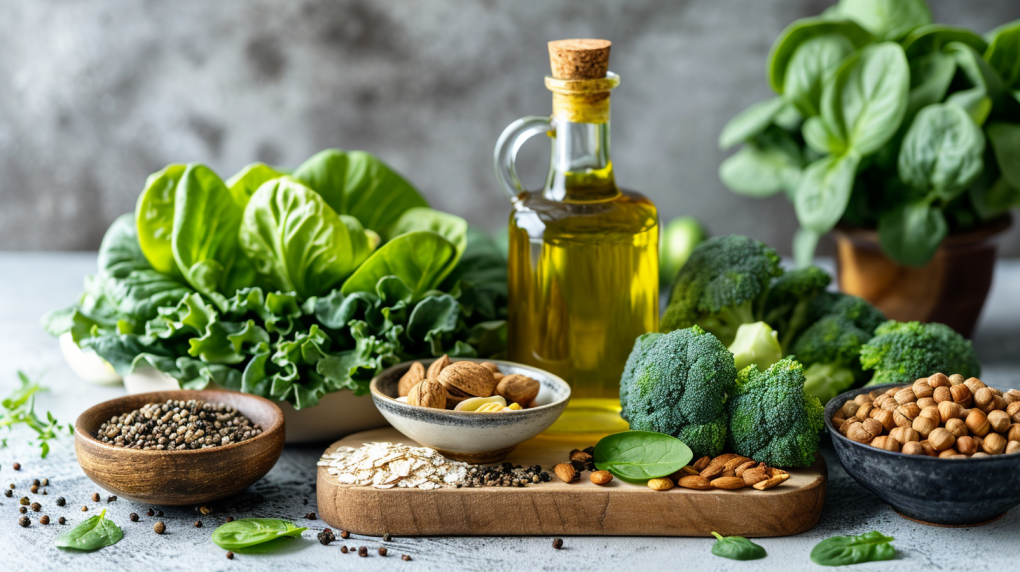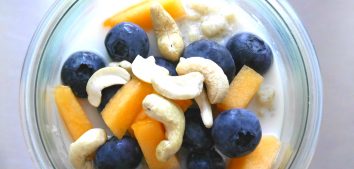
PMS and Diet – How to Alleviate the Symptoms?
Premenstrual syndrome (PMS) can be a challenge for many women at various stages of their lives. It is a phenomenon that affects mental and physical health. Currently, women struggling with ailments related to the menstrual cycle are increasingly paying attention to the potential benefits of a properly balanced diet and the consumption of particular nutrients. Let’s take a look at why it is worth paying attention to diet as a potential tool to help fight PMS.
What is PMS?
Premenstrual syndrome (PMS) is a set of physical, psychological, and behavioral symptoms that occur in some women in the second phase of the menstrual cycle (usually about 7 days before the start of menstruation). The symptoms of PMS can be varied. The most common include:
- stomachache,
- headaches,
- nausea,
- breast tenderness,
- excessive appetite,
- weight gain,
- depression,
- tiredness.
PMS can significantly impact women’s quality of life and daily functioning. Although all the mechanisms that lead to its occurrence are not fully understood, there are many factors, such as hormonal changes, genetics, or even lifestyle, that may influence the severity of symptoms.
Diet in PMS
Appropriate diet therapy is increasingly used to reduce and alleviate the symptoms of PMS. Scientific research confirms the influence of dietary modifications on alleviating PMS symptoms, emphasizing the particularly beneficial effects of certain dietary components.
Vitamin D
By regulating hormone levels, especially estrogen, vitamin D can alleviate PMS symptoms such as headache, muscle tension, and mood swings. Additionally, it improves mental health by reducing the risk of depression and anxiety that are often associated with the premenstrual period. Vitamin D also affects the mechanisms that regulate pain perception, which in turn may result in pain relief. Despite promising results, remember to consult your doctor first to adjust your vitamin D dose to your individual needs.
B Vitamins
B vitamins play an important role in relieving PMS symptoms. Vitamin B6 affects the production of neurotransmitters, regulating mood and reducing irritability associated with PMS. B vitamins are essential for the healthy functioning of the nervous system, which can help reduce headaches and muscle tension. It is also worth ensuring adequate intake of vitamins B1 and B2. The sources of these vitamins include: whole grain cereal products, nuts, seeds and dairy products.
Omega-3 Fatty Acids
Omega-3 acids, which are found e.g. in fish, seafood, walnuts or linseed oil, have anti-inflammatory properties, reducing swelling, pain and muscle tension associated with PMS. Additionally, they regulate the production of prostaglandins, which affects hormonal balance, alleviating emotional symptoms such as irritability or mood swings. Research suggests that consuming enough omega-3 fatty acids may help reduce the intensity of premenstrual symptoms.
Magnesium
Magnesium plays a key role in hormonal regulation and is important for the functioning of the nervous system, which translates into the reduction of muscle tension, breast pain and headaches associated with PMS. Moreover, it affects the balance of neurotransmitters, which can alleviate mood swings, irritability and feelings of depression, typical of the premenstrual period. Research suggests that magnesium supplementation may effectively reduce PMS symptoms by providing relief from physical and emotional ailments. Consuming appropriate sources of magnesium with your diet (e.g. pumpkin seeds, oatmeal or whole grain products) is a natural way to support women in the fight against PMS, improving their daily well-being during the menstrual cycle.
Calcium
Studies have shown that not only are serum calcium levels lower in people with PMS, but calcium supplementation can significantly reduce the incidence of PMS and its associated symptoms. Calcium plays a key role in maintaining the health of the nervous system and hormonal regulation, which can relieve muscle tension and reduce pain associated with PMS, such as headaches and breast pain. Calcium also supports bone health, which may be important in the context of hormonal changes associated with the menstrual cycle. To begin with, it is worth ensuring that you provide the appropriate amount of calcium in your diet and regularly consume products rich in this element, e.g. dairy products, nuts and green leafy vegetables.
Appropriate intake of the above-mentioned ingredients can be an effective natural means of supporting women’s comfort during the menstrual cycle. If you want to follow a proper diet, I encourage you to check out my Diet & Training by Ann app (HERE), where you will find professionally balanced menus, which may be crucial in reducing PMS symptoms. However, if you are struggling with significant deficiencies, it is worth considering appropriate supplementation. Here, I can in good conscience recommend my Levann Supplements (HERE) . However, we have to keep in mind that each body is different and needs various ingredients and their amounts so before making significant changes to your diet or supplementation to alleviate PMS, you should consult a doctor or dietitian.
Bibliography:
- Abdi F, Ozgoli G, Rahnemaie FS. A systematic review of the role of vitamin D and calcium in premenstrual syndrome. Obstet Gynecol Sci. 2019 Mar;62(2):73-86. doi: 10.5468/ogs.2019.62.2.73. Epub 2019 Feb 25. Erratum in: Obstet Gynecol Sci. 2020 Mar;63(2):213.
- Arab A, Rafie N, Askari G, Taghiabadi M. Beneficial Role of Calcium in Premenstrual Syndrome: A Systematic Review of Current Literature. Int J Prev Med. 2020 Sep 22;11:156. doi: 10.4103/ijpvm.IJPVM_243_19.
- Mohammadi MM, Dehghan Nayeri N, Mashhadi M, Varaei S. Effect of omega-3 fatty acids on premenstrual syndrome: A systematic review and meta-analysis. J Obstet Gynaecol Res. 2022 Jun;48(6):1293-1305. doi: 10.1111/jog.15217.
- Siminiuc R, Ţurcanu D. Impact of nutritional diet therapy on premenstrual syndrome. Front Nutr. 2023 Feb 1;10:1079417. doi: 10.3389/fnut.2023.1079417.










Comments No Comments
Join the discussion…